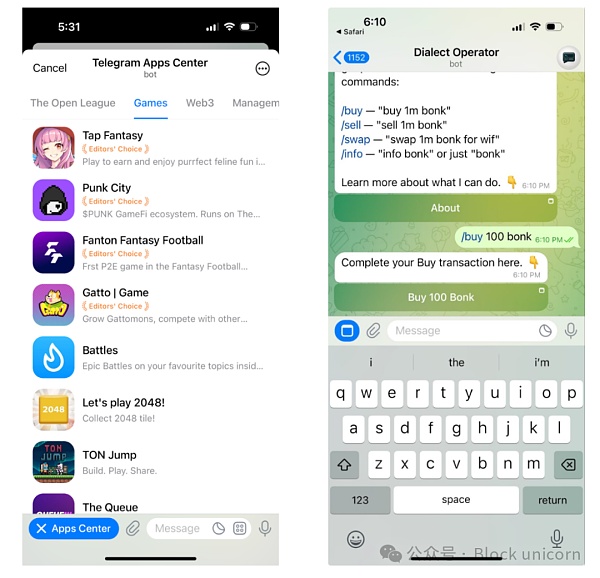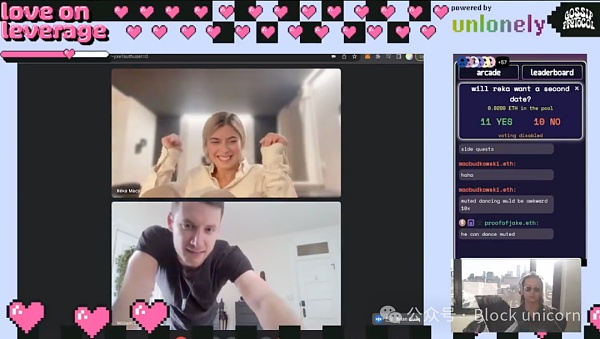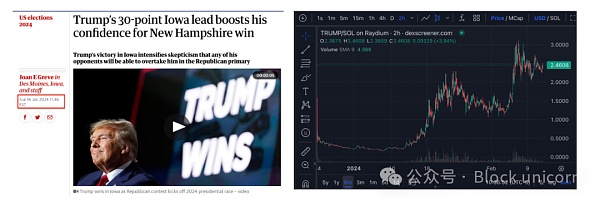Article author: SHAYON SENGUPTA, article compiler: Block unicorn
"Price is news" is a motto often used in the cryptocurrency community whenever there is a rapid price movement on the network that attracts more participation and attention. This sentence will be quoted. However, I find that the opposite of this statement is perhaps even more profound:“News is price.”
In my contribution to What to Expect from Multicoin 2024, I described a clear change in the way assets are priced, which I named "Value Concern Theory". In the crypto space, the primary input to asset pricing is not around risk premiums or multi-factor models of cash flows, but around the perceived amount of time, effort, and capital invested by the community surrounding an asset. It’s important to note that this is not a normative statement, but rather an observation of how tokens as an asset class have historically flowed.
The Internet enables arbitrary, two-way information transmission. Cryptocurrencies build on these foundations by enabling arbitrary, two-way transfers of value. Today’s consumer internet—streaming platforms, online media, mobile apps, social media, etc.—can be summed up as an attention marketplace, and as such, money and attention increasingly have similar characteristics.
In the 1930s, Benjamin Graham had to wait for quarterly reports and financial statements to express his value by purchasing paper stock certificates through a human broker Investment Theory. In 2020, there was news that hedge funds were going to short Gamestop. Retail investors spread the news to every corner of the Reddit community, attracting thousands of retail investors to buy Gamestop shares on Robinhood, causing the stock price to soar within thirty days. 15 times - Confronted with hedge funds, exploding hedge funds' positions (retail investors vs. Wall Street). Consumer Internet and encryption infrastructure make the basic unit of information and value smaller (Block unicorn note: when the information gap continues to shrink, the price difference in the market will also be smoothed out), and at the same time increase data consumption and Volume and frequency of value transactions. As this trend develops, value focus theory becomes even tighter—information is money and money is information.
While markets for attention and value exist in reality, we have yet to truly see them collide. When we think about crypto consumer applications, this is what we're looking for. Crypto enables new assets to be quickly created around attention and traded where that attention is gathered: consumer-facing applications.
In the next few years, we expect consumer developers to meaningfully incorporate cryptocurrencies into the structure and user experience of their applications, changing the landscape at scale What can be traded and the range of trading venues. Internally, we call this type of application "Publisher Exchange."
Block unicorn comment: "Publisher Exchange" refers to the ability to publish content and trade on the Web3 social platform. Allow users to publish content, attract attention, complete transactions, and obtain benefits.
Publisher Exchange
Exchange in the crypto space Product-market fit comes naturally because one of the core uses of cryptocurrencies is to transfer value. Coinbase (fiat currency exchange and centralized exchange), Tensor (digital collectibles exchange), Jito (trading intention and block space exchange), and Phantom (order flow exchange) are all different forms of exchanges.
In the crypto space, exchanges have a position similar to that of major publishers in the consumer Internet (such as X, Instagram, and the New York Times): publisher control control the flow of consumer attention on the internet, while exchanges control the flow of funds in the crypto space.
As we think about the next generation of consumer applications, we look to eliminate the boundaries between exchanges and publishers and create new experiences that combine currency and attention.
Kyle (Multicoin CEO) wrote about UI layer composability in his 2024 Ideas contribution. The simplified implication of this argument is that the next big online exchange won't have traditional order books, depth charts, etc. like Coinbase; instead, it will be more like a short video app where users can bet on upcoming creations The dissemination power of user content, or a group chat where friends can instantly launch NFT collections based on inside jokes or memes, or an are.na-style curation platform where designers are inspired by their taste And gain fame and wealth. In other words, through cryptographic unique functionality, consumer applications are both publishers and exchanges: publisher exchanges.
Publisher exchanges increase the surface area for new asset issuances by embedding issuance and native trading into the application front-end, and allow these to be interacted and coordinated in novel ways assets. Introducing trading into familiar venues may seem narrow or analog, but we believe narrow markets are the beginning of the discovery of emerging behaviors that will lead to the creation of huge new platforms.
This will be a golden age of experimentation - a clean slate for developers to combine native distribution and transactions with new applications An experiment that combines procedural experience. "Crypto-native consumer applications" will treat these design principles as first-class citizens.
Emerging Publisher Exchange Category
Publisher- The goal of the Exchange (Publisher Exchange) is to meet the needs of users by trading at the same time as the content that users care about at any given moment. The next generation of consumer applications in the crypto space will allow users to natively issue and trade assets, thereby directly monetizing the user attention they capture.
For founders looking to build Publisher-Exchanges, we believe some design principles from publisher and exchange history will be relevant.
In the history of the consumer internet, publishers have essentially been the marketplace for content, and the marketplace has been driven by two core attributes: 1) discovery and curation (presentation) content that users want to see and interact with), and 2) trust and reputation (providing assurance to users). Successful publishers can generate strong "flow" by measuring the attention time users spend on them. That’s why Upworthy measures success in minutes of attention, and why Elon Musk is obsessed with “not regretting every minute of what you see” and “not regretting every second of what you see.” ——To put it simply, it means that the content users see every minute and second is valuable and will not make users feel disgusted.
For publisher-exchanges, the key is to first build a compelling core experience that attracts users' time and commitment, and then embed asset issuance and transfer so that it Consistent with the unique engagement they generate.
We do not think of an exchange simply as a trading place, but as an Athenian market where people trade in strictly defined, specific interact and exchange experiences, values, and information in context. With this in mind, we envisioned several broad application categories where we believe opportunities arise for Publisher-Exchanges.
Communication tool
Messenger (communication application) is becoming Prime candidate for Publisher Exchange.
An early example of this argument can be seen in WhatsApp and WeChat. Both platforms have rich developer ecosystems in India and China and are built on strong, state-mandated digital payments infrastructure. This allows teams like Sama and Meesho to embed AI annotation and local merchant e-commerce labor markets directly into the contextual state of users in their social graphs on these platforms.
In the crypto space, Telegram is the de facto messaging app, and their bot API creates a vast design space into which issuance and value exchange experiences can be embedded. Products like Dialect Operator and Maestro exemplify this perspective. They indicate that users want to be able to conduct transactions directly within their chat. These Telegram trading bots fit the definition of a publisher exchange because they bundle discovery and intent with execution, closing the loop between attention and value delivery. Telegram has its own hidden app store (go to search and type "tapps") with hundreds of bots that allow users to send payments, play games, discover content, and more.

While these publisher exchange bots are used to reduce execution times for retail traders looking for super-high returns in closed chat groups, there are further opportunities to significantly increase the range of assets that can be issued and traded. We expect chat groups to become the base layer for new forms of work (get paid for completing tasks directly in chat), special projects (crowdfund new initiatives in large conversations), and entertainment (issue memecoins like sending gifs), all of which The Publisher Exchange experience.
Content Network
The largest social media apps (Instagram, TikTok, X, Youtube) are content marketplaces where creators of music, posts, videos or other user-generated content compete for users’ attention. Creators can then use the attention they accumulate to sell content or brand products.
Sponsored Business Content
The north star of crypto content networks is audiences supporting individual creators or pieces of content, with creators receiving a significant share of the revenue from the content they create. This was the original theory for creator tokens, but we found that if these creator tokens were disconnected from the platforms their audiences were on, they alone might be less likely to succeed.
We are seeing early experiments today with new types of content networks, each issuing and trading new types of assets within applications. We envision a new type of content market where users come for entertainment but stay for the market.
Unlonely is a streaming platform that embeds token issuance and prediction games directly into streams and chats. Farcaster Frames are another example of their ability to interact directly in on-chain state, providing endless opportunities to issue and trade assets in familiar venues.

Today, most content networks monetize user attention through display ads. Ad-based customer acquisition models often suffer from poor funnel conversions and are decidedly a sub-optimal solution as it often interrupts the user experience; the user is aware that they are being marketed to.
Display advertising is a relic from the pre-cryptocurrency era. A more basic method for merchants to acquire users is through Direct Value Issuance (DVI)—that is, paying users directly with tokens.
Advertisers should be able to distribute value directly to users, rather than serving targeted ads based on user behavior/group building. A content network wouldn’t need to place an ad about a sports betting platform between the posts of a user scrolling through an NBA game — instead, it could allow sports betting platforms to airdrop $50 worth of credits directly to users.
Advertisers no longer transact through the platform as a rental intermediary, but instead hand their customer acquisition cost budget directly to the end user. In turn, content marketplaces can offer their users a superior product: they move from being a venue where their attention is actively mined and seeing no resulting benefit (by displaying ads), to one where they earn based on their attention patterns and spend assets and have direct exposure to this financialization process (through DVI).
A backdoor embedded in an ad network may be even more compelling - it allows applications to embed universal financial services at no cost by providing each user with an address. These services can add to deep interactions that users already have.
Information Market
The search engines of the 1990s were committed to Organize information on the Internet, initially focusing on static web pages and then expanding to new forms of media and content. Initially, the cost of accessing this information was subsidized through advertising.
Today, the information on the Internet is much more than just web pages—it's spread across thousands of forum posts, group chats, podcasts, and private databases. Information markets (e.g., prediction markets, sports betting platforms, alternative data providers) are a way for users to sift directly from all these sources for signal rather than noise, and to distill the probabilities of outcomes from large amounts of qualitative information.
Although the most successful information markets do not currently rely on cryptorails, we believe they can be enhanced by cryptographic primitives. Design spaces will either financialize the information itself based on quality, or embed these markets directly into venues for first-party information sharing.
Prediction markets like Polymarket are essentially binary call options surrounding future outcomes, such as an election or sporting event. Historically, they have failed to accumulate enough liquidity or attention to serve as a reliable source of information. In contrast, cultural assets (such as meme coins or NFTs) have proven to have higher attention (and information content) than closed prediction markets because they do not have a fixed expiration date and can have their own life cycle . For example, the trading volume of Trump-related NFTs and tokens has been higher than the Polymarket prediction market.

Hence, new spot assets that directly track attention may represent agents more interested in attention or information flow. Embedding these types of assets into a news distribution platform or editorial publisher may be more attractive than the binary, fixed expiration constructs of the past. Just like Numerai borrowed from the principles of token curation registries to run machine learning competitions on obfuscated financial data, we believe a universal information marketplace for new categories of information can be built along the same principles.
Imagine a StackExchange-style forum where voting and reputation primitives have financial value, or a Pinterest-style curated board where users can add their own Reputation bets on emerging trends and behaviors. There is a vast amount of high-quality information on the Internet today, mostly contributed by users without any financial motivation - what is missing is a form of proper aggregation and monetization, and this is where cryptographic primitives are most useful.
We are excited about new manifestations of this argument and, in general, about tokenizing invisible quantities in content networks: Accurate Sex, reputation, humor.
Professional Interest Communities
Tokens allow communities to focus on novel issues and directing resources to those issues. ConstitutionDAO proved that a memecoin could pool enough funds to bid for a rare artifact, and after the auction ended, the network itself began to come alive.
The point in this case is that when tokens have a mission attached to them, they are more likely to coordinate real-world actions. This collaborative funding model can support new ventures that are often overlooked by traditional financing and research lines: for example capital-intensive projects such as VR headsets, open source software corners, art spaces or drug discovery for rare diseases.
Tokens uniquely facilitate capital formation from distributed sources and give capital providers strong ownership of that capital product. This means that groups around the world can coordinate capital to conduct experiments at scale, commoditize the results of those experiments, and return the proceeds to token holders.
HairDAO and VitaDAO are examples of this current situation. We are already seeing new platforms for collaborative research that are funded and sustained by the accumulated attention around a variety of neglected issues.
Unlimited transaction canvas
Consumer crypto applications will It is a generative transformation, not an imitative one. We describe the tight connection between crypto-native attention, capital formation, and coordination in this article because the main unlock of crypto is that transactions can happen anywhere. Rather than simply moving existing economies onto the chain, crypto unlocks a new economy of attention, allowing like-minded groups to exchange minutes for dollars and vice versa.
 JinseFinance
JinseFinance











